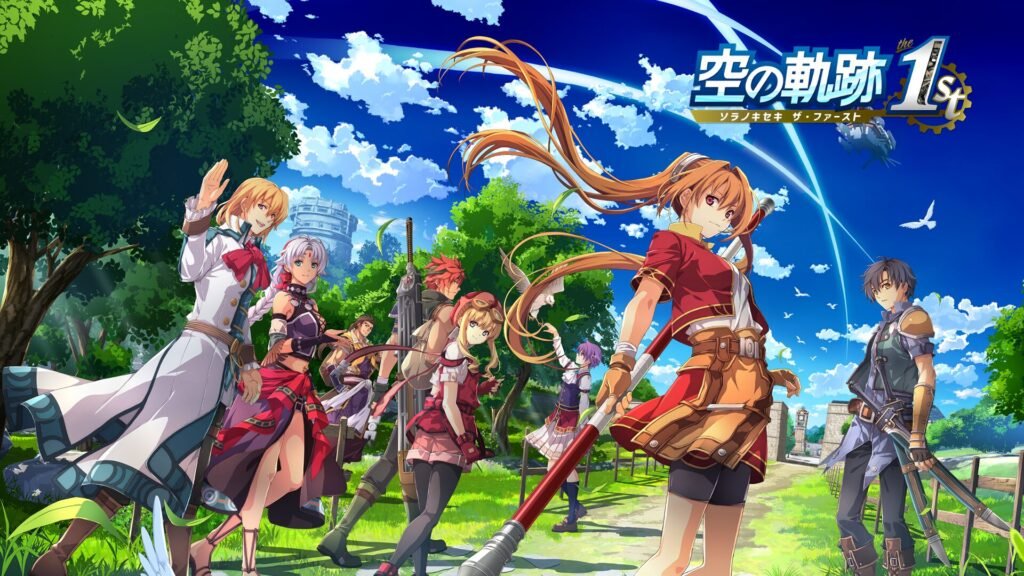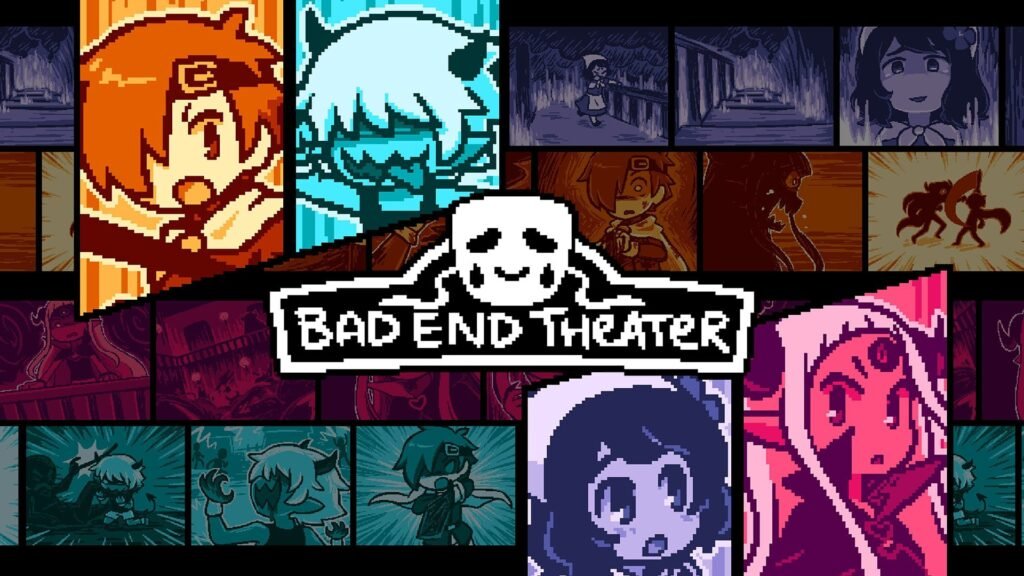Atelier Meruru: The Apprentice of Arland DX is the third title in the Arland trilogy of Atelier games. Originally planned as the conclusion for the arc, it brings us to Arls, a kingdom in redevelopment. As princess Meruru, it’s our job to reach milestones and bring an impressive evolution to our people.
Alchemist Princess Time
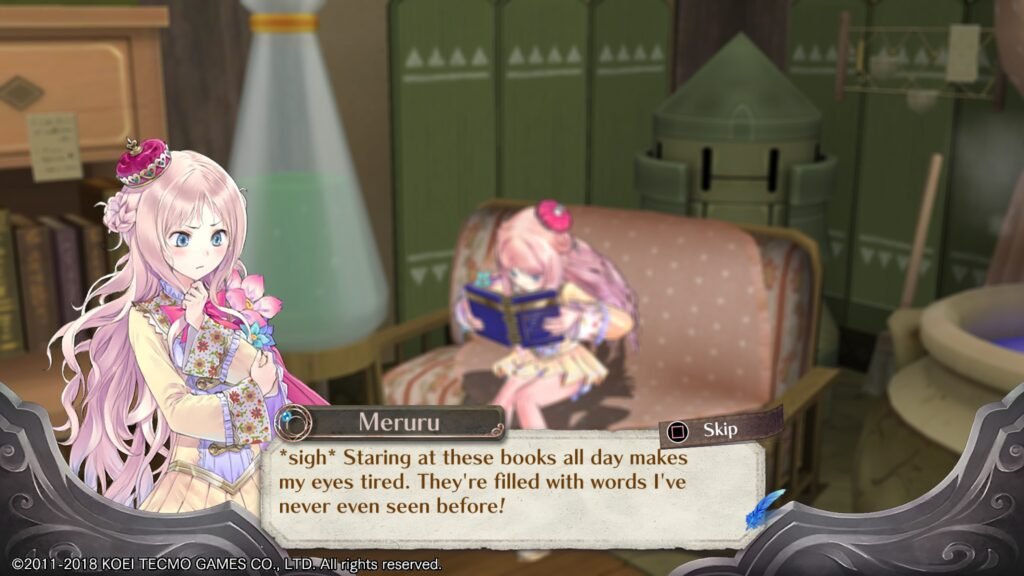
Atelier Meruru tells the story of Merurulince Rede Arls, a young princess from a small kingdom close to Arland. Ever since she was a small kid, the girl had always been a tomboy of sorts, sneaking out of the castle and getting herself into trouble. Once an alchemist came to town, she became her disciple and started dedicating herself to the craft.
Despite her natural inclination to be a free spirit, Meruru has obligations as a princess. Noticing she could end up neglecting her duties, her father gives her a mission. In just three years, she has to prove that she can use her newfound alchemy skills for the kingdom’s growth.
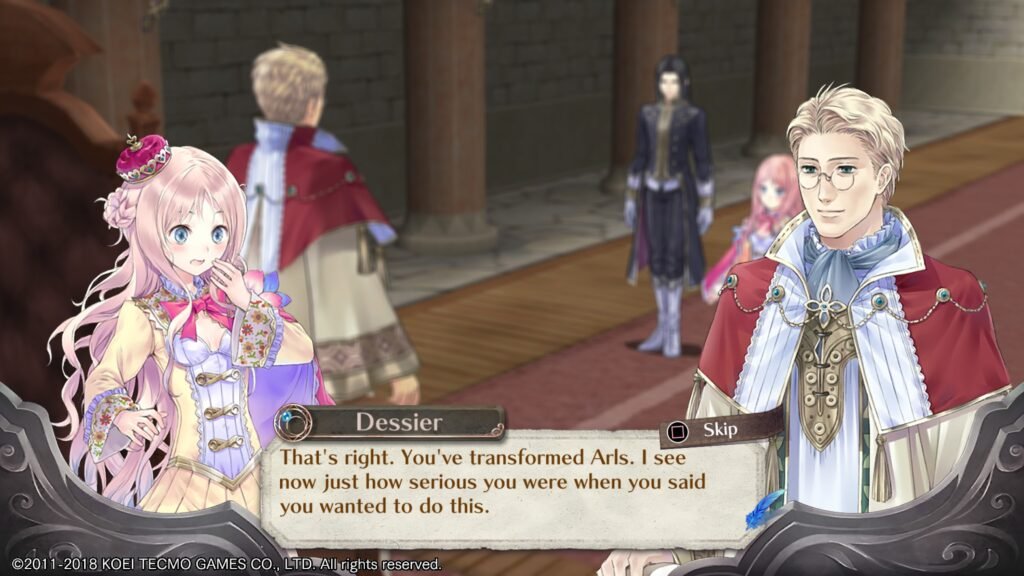
With Arls and the Arland Republic arranging a merging in five years, her actions in Atelier Meruru will be a pillar stone of their alliance. As such, she now has to take care of many demands from the populace while taking into account the government necessities.
During all that time, she will also have the chance to get help from various people. This includes servants which she considers childhood friends but also individuals from the previous games. As the third game in the Arland subseries, it gives us a good look at what happened to various characters, making it more recommended for people who have played Rorona and Totori before.
A Kingdom in Growth
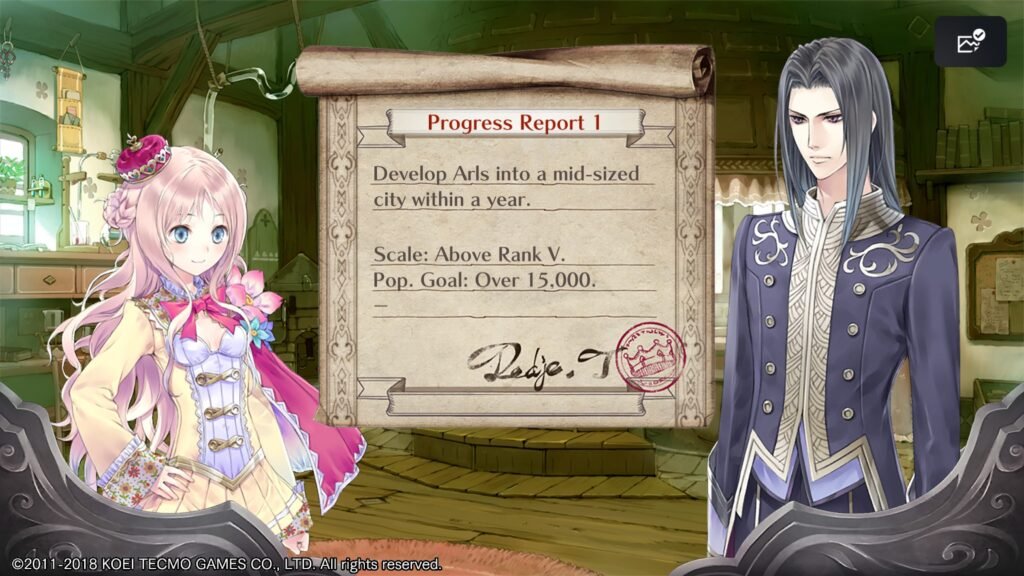
Deadlines are a common feature of the Atelier series, defining how the experience will play out and forcing players to consider their time usage carefully when it exists. Atelier Meruru is no exception as we get a calendar, and any actions (changing areas, fighting or gathering items) will cost time. For Meruru, our deadline this time is making Arls reach 30,000 people in three years. After five years, it’ll also be necessary to reach a 100,000 goal.
To make the most out of their time, players will have to do various activities, choosing whether to focus on exploring and fighting or using your current resources to make items. Balancing the progress in those two areas is one of the key elements of the franchise, as players have to become stronger and more skilled in alchemy.
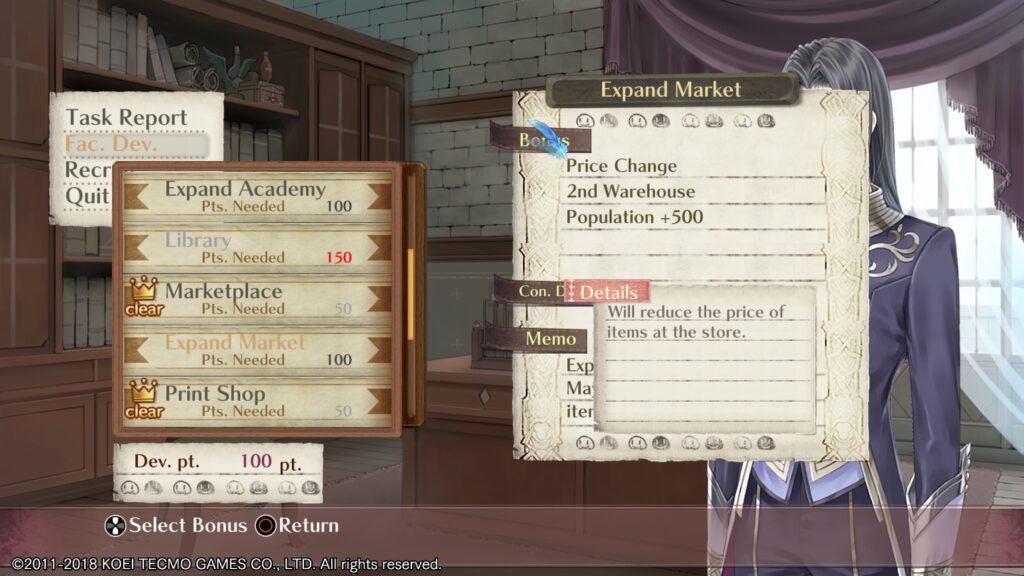
Because we have a very ample time to reach our goal, it’s easy to lose track of how well, we’re doing and what we should focus on at a specific moment. The game mitigates this issue by giving us special development quests, which require us to deliver specific items, defeat all monsters in areas to unlock the next one, or even handle small tasks like shopping.
Completing those tasks will give us development points, which we must then use to unlock new facilities for the kingdom. This simplified city building aspect will increase the population in Arls and let us get multiple bonuses. Through this system, players will have the chance to reduce the goods’ prices on shops, enhance alchemy and EXP gain in battles, or even have the chance to get specific endings.
Spreading Happiness
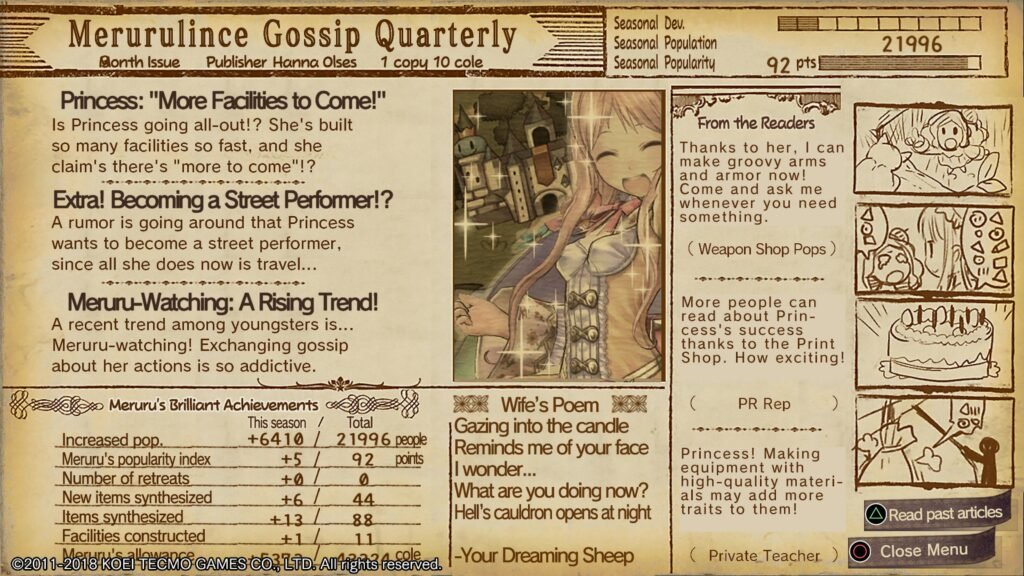
Another element we have to take into account is Meruru’s popularity, which will affect how much the town grows over time while we’re just handling other things instead of unlocking new facilities. This passive growth will also be important going forward, making it much easier to reach the goals.
In Atelier Meruru, it’s necessary to handle quests in the tavern to increase your popularity. These missions generally revolve around delivering gatherable or synthetizable items, or defeating certain monsters. This system is similar to Rorona’s and Totori’s but there are no deadlines for solving them, making it easier to accept these extra tasks.
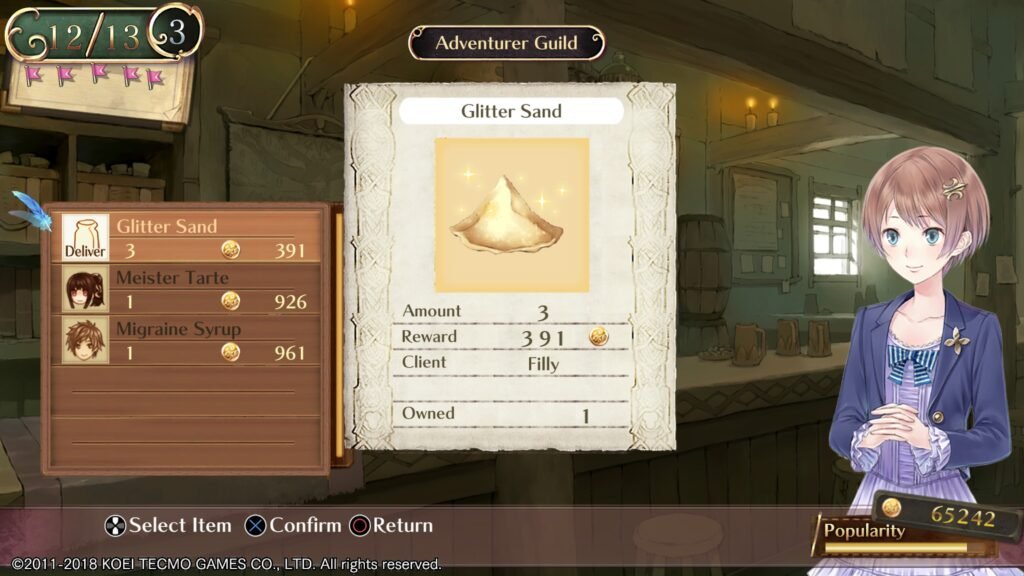
However, failing them or taking too long isn’t inconsequential. Firstly, the player has a limit to how many quests they may accept at a given time. That means a poor choice can get in the way of picking other tasks that they player could accomplish with more ease.
Secondly, as time passes, our popularity decreases, meaning we should keep it as high as possible to enjoy the passive benefits. Solving those extra quests frequently will help with this.
Character quests also come through this menu. They showcase the face of the requester and are a great way to get more intimate with a character, unlocking interaction scenes.
The Ol’ Loop
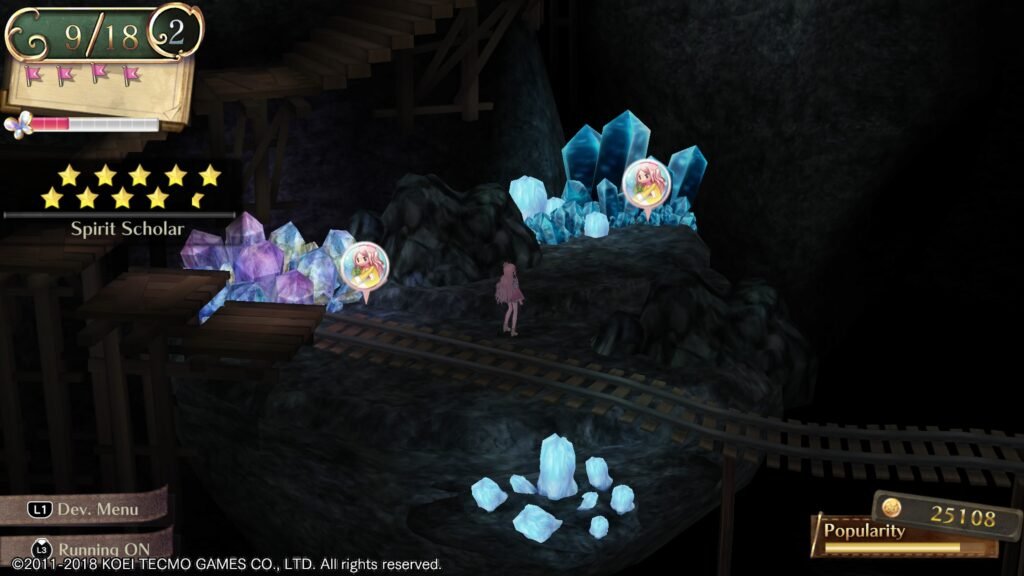
Besides the kingdom building elements, Atelier Meruru’s gameplay revolves around the usual three pillars of Atelier: fighting, gathering, and synthesis. With limited time, we need to plan our outings, avoid unnecessary combat, and try to handle as many tasks as possible in a single swoop.
Every time we go out of town, we spend time to get to a new area. We can gather ingredients and fight monsters, but even getting there is costly. Characters will also spend LP and become weaker, so it’s better to do short trips but plan them well.
Once we have some items, we can use them for synthesis. While many games would have crafting as a secondary element, that can’t be said for Atelier. Making items with alchemy is a necessity to advance. As such, it’s essential to not let this side of the game get neglected.
Item Development: Theory and Practice
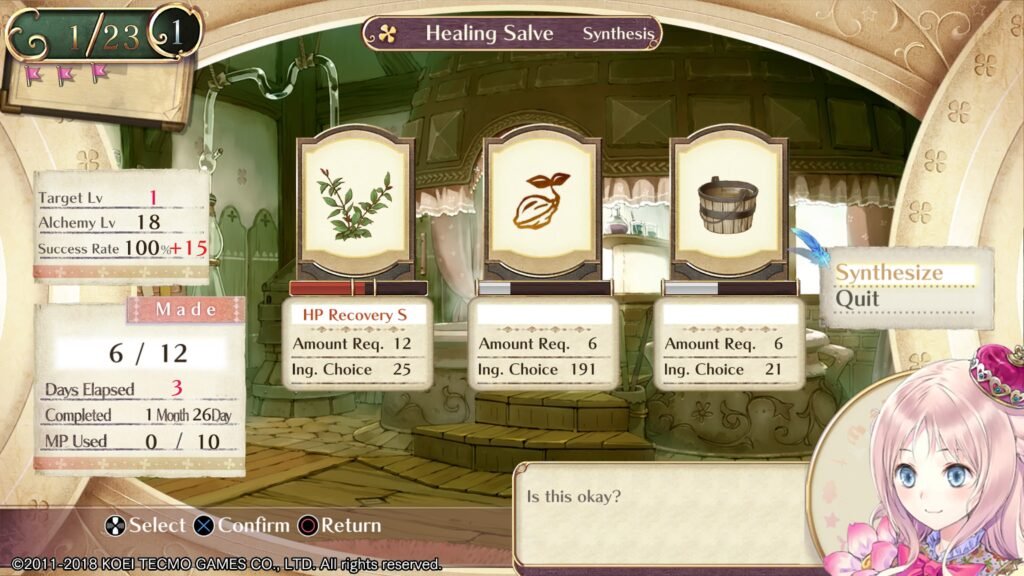
Alchemy is one of the cornerstones of Atelier Meruru, as we need to consistently improve our skills to fulfill requests. Making items will level up our alchemy skills and let us make even harder items. New recipes also come with this improvement leading to even more options.
Making new items follows the same general idea of Rorona and Totori, with ingredients providing quality points and traits. Ingredient choice can lead to significant differences in the final product. For instance, we may have a much stronger bomb or add extra effects to it.

Two similar traits may also mix together, creating stronger bonuses. However, it’s important to keep in mind that there’s an associated cost to attaching a trait to an item. As such, there may be times when we unlock a new option but can’t use it because of the cost limit.
New items can also become ingredients for other creations, improving our choices. However, every item has a recipe, so it’s not possible to disregard it just to use a trash item.
A New Home for the Homs
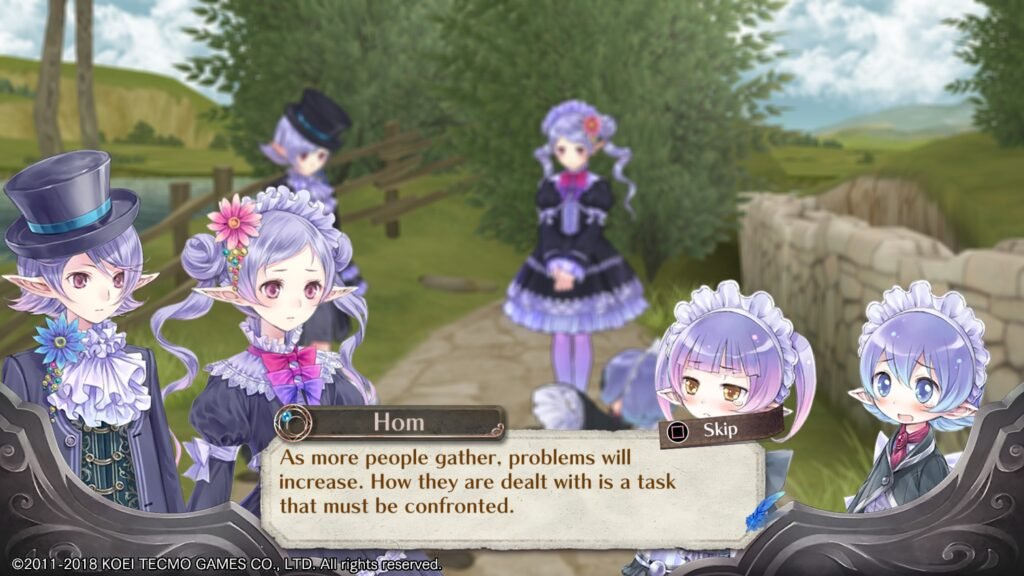
While not available at first, the homunculus are a special system that can make a big difference in Atelier Meruru. They’re little helpers who can gather or synthesize items for us.
However, just like the other elements in the game, their actions take time. We also can only change their actions by interacting with the bulletin board at home. So, if we spend too much time away, they’ll just repeat the same task.
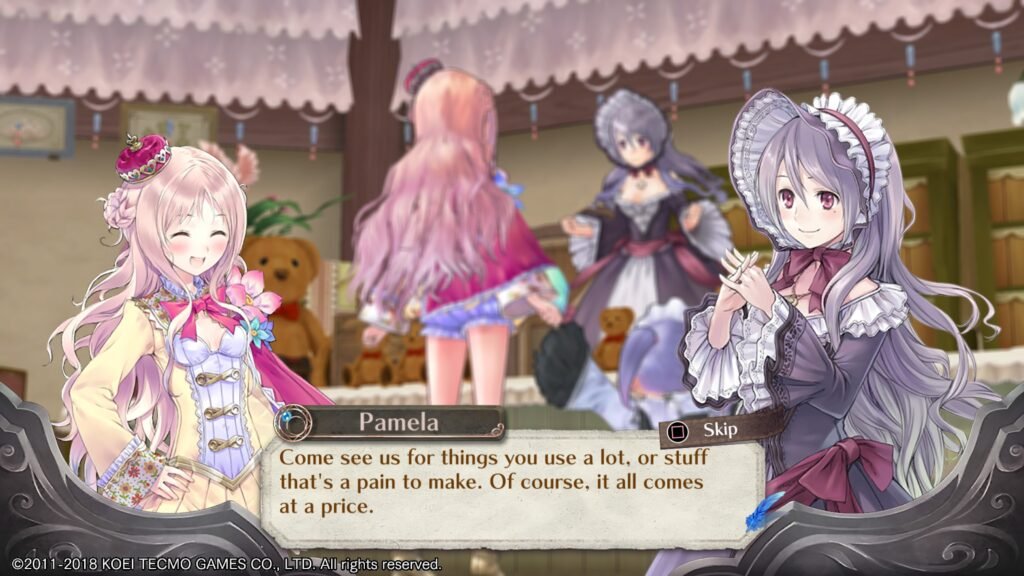
If it’s synthesis and they don’t have the necessary ingredients, they’ll just become unable to act until we give them new orders. Meanwhile, gathering at the same place multiple times may lead to a better pace than the initial cost.
With proper planning, we can use their help to avoid missing ingredients for future creations. The Homs can be an invaluable asset to the player if they keep in mind what they want to do next. The same can be said for Pamela’s shop, as we can register items and buy copies of those to fulfill quests.
Battles Ahoy

Atelier Meruru is a turn-based RPG in which battle order revolves around speed and the previous move’s delay. A strong attack is likely to postpone a character’s next turn more than the basic one or guarding.
Meruru herself can use some of the items she synthesizes, like bombs or recovery items. She can also attack, guard or run (when the option is available).
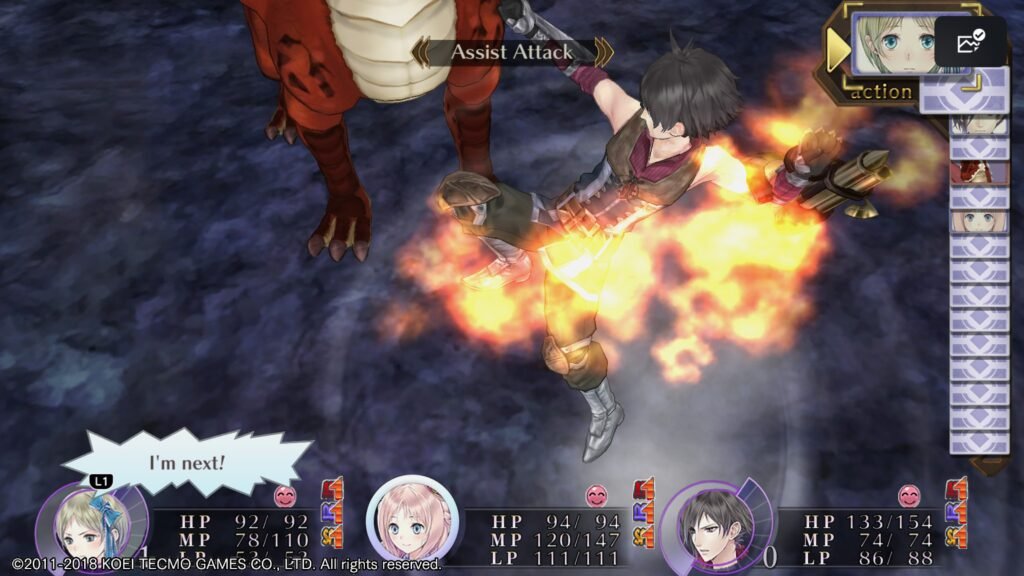
Whenever Meruru uses an item to attack, she can also ask for support from one of her teammates. The party can have three people (including Meruru) at any time, so they’re associated with the left and right triggers.
By spending one Assist Gauge point, the ally will do a follow-up attack. If the other is also available, they can spend one of theirs to attack as well. Meruru can then use the same item again if it has another activation, and the two teammates may do a final attack.
Support points are also a way to defend Meruru from hits. Every time she’s in the enemy’s attack range, the game offers the option of spending points. This may be a wise choice sometimes, especially as non-alchemists can’t use items in battle.
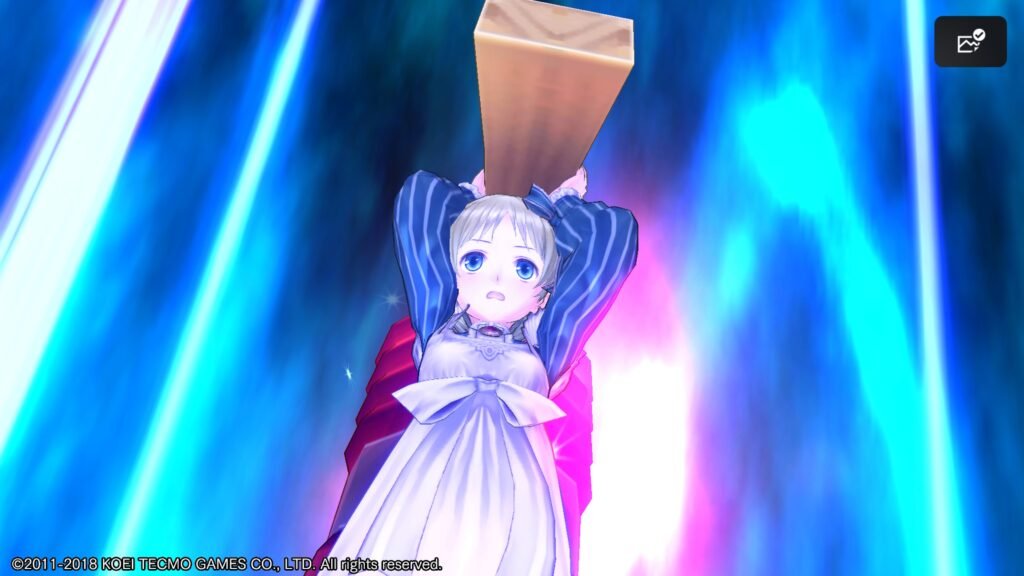
Each battle restarts the support gauge, meaning this system can only be properly used in long battles. Special attacks follow the same rule, not allowing players to save points for a big boss.
Despite those elements, non-alchemist characters have very limited options in battle. With only a few skills unlocked over time and whatever equipment we make, they are hardly malleable.
Not So Deluxe
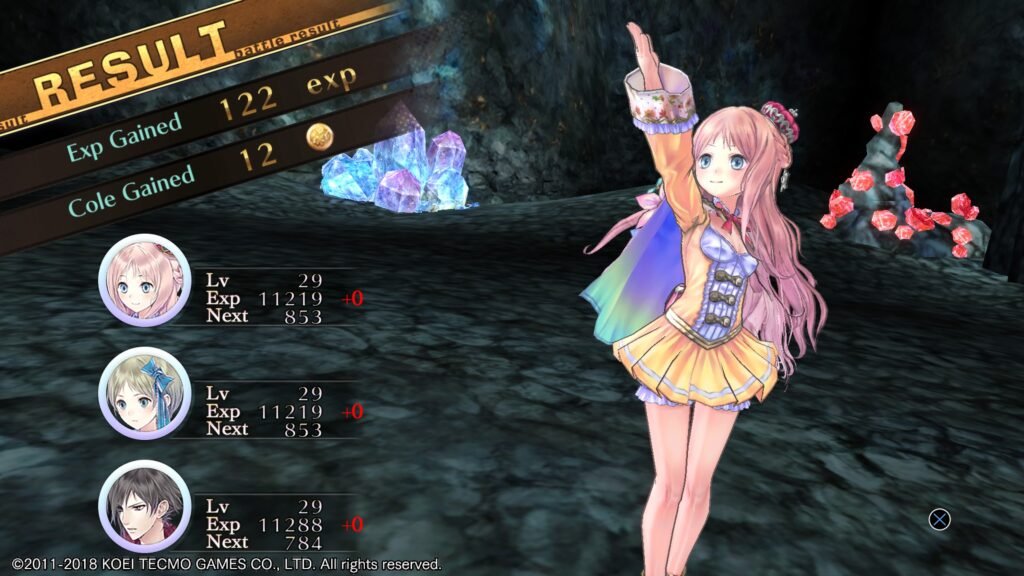
Like Atelier Totori DX before it, Meruru’s new edition could have used more polish. Out of the trilogy, Rorona is the one with the most robust quality of life features, such as the dialogue log. As a result, it feels like the DX edition missed an opportunity to improve the user experience for Totori and Meruru.
Despite that, the game does play well. Compared to the previous Meruru Plus on PS Vita, the DX edition adds the possibility to run faster. It also has an extra epilogue that connects it to Lulua, the fourth Arland game.

Textures and area geometry are subpar in quality. The game also has a tendency to focus the camera too close to Meruru and get in the way of seeing some of the scenery. It’s especially egregious in town and at the workshop.
A Little Crown

Atelier Meruru: The Apprentice of Arland DX uses the kingdom building element as a good direction to improve on the gameplay. As a result, the game manages to offer extra depth and tension to the satisfying game loop that’s usual in the franchise.
Unfortunately, the rerelease also suffers from not quite improving as much as it should on the original game. With Atelier Rorona DX in the pack, it’s hard to ignore the downgrade in quality of life and user experience. Nonetheless, it’s definitely a title that any fan of RPGs should give a try.
Joys
- A rewarding, satisfying game loop based on continuous exploration, synthesis and combat;
- The kingdom development aspect is an excellent goal that improves on the demands of the deadline system;
- In-depth synthesis system that allows players to customize the items they make;
- A charming world explored through funny slice of life moments;
Cons
- Quality of life elements are a downgrade when it’s played after Rorona Plus;
- Small movesets for the characters reduces their malleability in battle;
- Some graphical aspects deserved more improvement.


